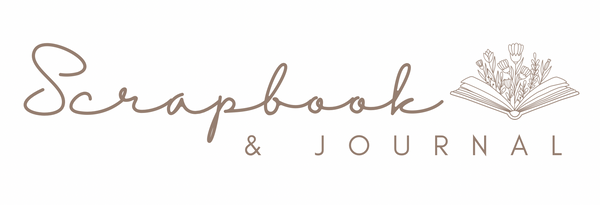
How to Create a Junk Journal: A Beginner’s Guide
Share
There’s something truly comforting about sitting down with a pile of paper scraps, old envelopes, ticket stubs and magazine cuttings, and slowly turning them into a one-of-a-kind book. A junk journal is part diary, part scrapbook and part creative outlet. It doesn’t follow any strict rules, and that’s what makes it so enjoyable – it’s a chance to play, to experiment and to give everyday scraps a second life.
Gather your materials
You don’t need to spend much to get started. Most of what you need can be found around the house. Scissors, glue or tape, a hole punch, and some string, staples or thread will form your toolkit. For the cover, think creatively – the spine of an old book, a cereal box, or even heavy card from packaging can be transformed into something beautiful. As for the pages, variety is key. Sheet music, envelopes, maps, wrapping paper, brown bags, receipts and magazine clippings all add personality. If it makes you smile or sparks a memory, it deserves a place in your journal.
Create your pages
Once you’ve gathered your papers, fold or trim them to fit inside your chosen cover. Don’t worry about perfect edges or matching sizes – those uneven lines and layered textures are what make junk journals so charming. Gather several sheets together into “signatures” (small folded booklets). You can bind these using staples, a simple pamphlet stitch, or even tie them with ribbon. When you’ve made a few, secure them into your cover using elastic, string or glue, depending on the look and feel you’d like.
Design your cover
Your cover is the first thing you’ll see each time you open your journal, so take your time and enjoy decorating it. You could collage scraps of patterned paper, wrap the card in fabric, or use washi tape for a more modern look. Adding lace, buttons, charms or pressed flowers gives a nostalgic touch, while a minimalist design with a single image or word can feel calm and understated. There’s no right or wrong – it should reflect your style and mood.
Start filling it in
Now comes the most rewarding part – filling your pages. Some people use junk journals as diaries, jotting down daily thoughts and feelings. Others see them as a place to play with mixed media, adding paint, ink, stencils and stamps. You might tuck in postcards from a trip, layer photos with scraps of wrapping paper, or add pockets to hold letters and keepsakes. You can even leave some pages blank to be filled later. The beauty of a junk journal is that it grows with you, slowly becoming a reflection of your creativity and your life.
Why it matters
Creating a junk journal is about more than paper and glue. It’s a way to slow down, to reuse what might otherwise be thrown away, and to craft something that feels deeply personal. Each page tells a little story, not just of what you’ve included but of the time you spent making it. Over time, your journal will become a keepsake, filled with textures, colours and memories that no shop-bought notebook could ever replicate.
So why not gather a few scraps, put the kettle on, and begin your own junk journal this weekend? You might just find that the process is as soothing as the finished book itself.
Shop our crafting tools to start putting your journal together.
